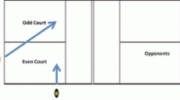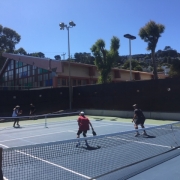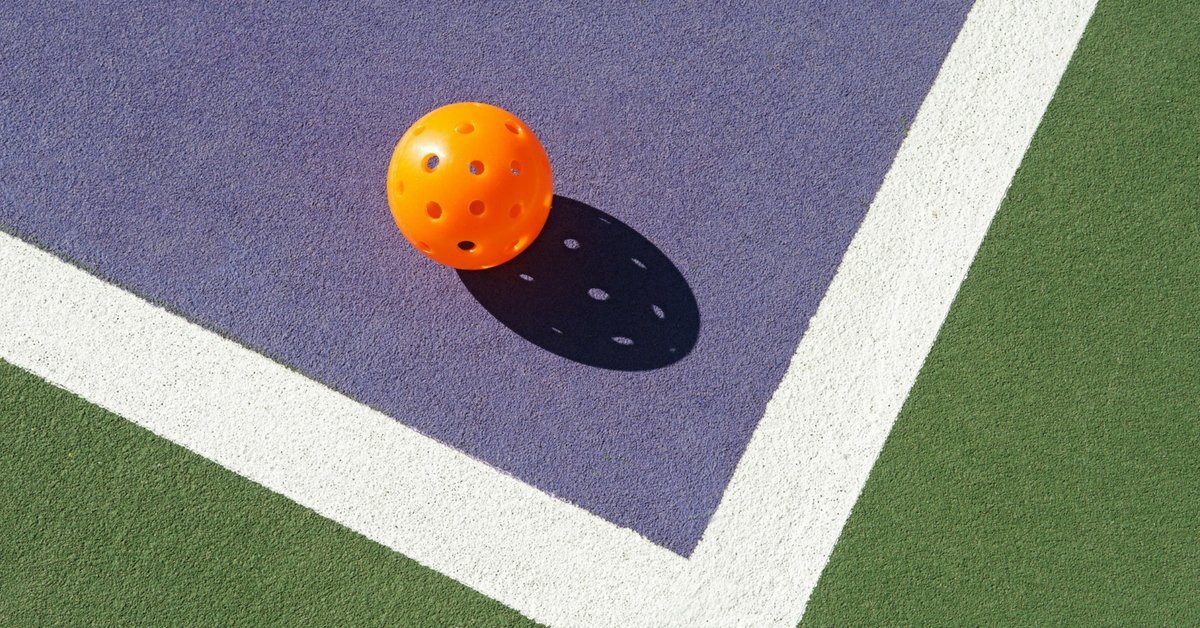Provisional Drop Serve Rule
/in 2021-1, news, newsletter, pickleball, quick tip /by KellThe rule is new this year. But since it is “provisional” it is temporary. It may be withdrawn next year. For details on this rule, please refer to the actual 2021 Rulebook (See page 25 Rule 4.A.8). Essentially when in the serving motion, you reach up as high as you can, then drop the ball without forcing it down or flipping it up in the air. After it bounces, you may hit the ball in any motion you like. Swing up, swing down, paddle to wrist orientation doesn’t matter. As long as your feet are behind the line, you can even drop the ball inside the court. You can hit it on the second bounce if you like. So long as you drop the ball properly, there are no rules prohibiting how you strike the ball, other than keeping your feet behind the baseline.
I have been using the drop serve a lot the past few months. I think it gives me more time to line up my serve rather than just hitting the ball directly out of the air. I also don’t need to worry about my swing path being legal. Tho as a warning, be careful about the bounce. The ball can bounce erratically. Not sure if it’s due to the ball bouncing off a hole in the ball or just an out of round ball. But if it happens, you can always pick up the ball and try again. Also, I wonder if the drop serve may just appeal to tennis players who are used to hitting the ball off a bounce?
Since this seems such a significant rule change, allowing so many options, I expected all sorts of creative new serves to come from it. So I asked a few teaching pros I’ve met, to get their thoughts on the drop serve. Do they use it in tournament play and do they teach it? Answer: no and mostly no.
Dave Velardo – Teaching Pro and founder of GamevisionAI.com . He also has a teaching website at http://proposalpickleball.com/ . You may remember Dave before Covid. He was teaching in our area but has since moved to Boston.
I believe the drop serve does not make sense for the great majority of players. This is because the ball doesn’t bounce up near the waist, and, generally you want to be making contact as high as possible while keeping it legal. Secondly, hitting the ball as it is descending is how the pros get a lot of topspin on their serves (the most common aggressive serve on the pro tour is the hard, deep, topspin serve).
However, of the hundreds of players I’ve seen play in New England, and of the dozens I’ve seen attempt the drop serve, I have seen two 3.5 players consistently hit an excellent, difficult to handle, hard, low drop serve. But when players ask me, I generally advise not to even bother trying it.
Rob Davidson – Teaching Pro and founder of RisePickleball.com. He is Nationally ranked in Men’s Pro Open Doubles, Director of Pickleball at BlueStar Resort in Arizona. I have attended several Rise Pickleball Camp events with Rob and he is the best. His camps are super fun. If I had any talent, I would be a helluva player by now. Anyway, I highly recommend taking one of his “destination camps”. You can find his camp locations and dates on his website.
There are no pros that are using it that I am aware of. There may be a few reasons for this but the main reason is that, no matter how high you drop the ball from, it’s not going to bounce up higher than your waist, and that is the level that many pros try to make contact with the ball at. Having a lower point of contact reduces the amount of velocity you can put on the ball and have it still go in. I played around with it for a half day and wasn’t sure if there was any significant benefit to using the drop serve.
Jordan Briones – Teaching Pro and founder of PrimeTimePickleBall.com. This is a site full of great tips for improving our game. And as you will see, he produced the video below on the drop serve.
I think the drop serve is a great option for beginner players. It also can add a different variety to serving (i.e. underspin). I personally don’t use it in competitive play, as I believe it doesn’t really provide any significant advantage over the traditional serve. I suggest that players work on both the traditional serve and the drop serve. It is still a provisional rule, so this is why I think all players must learn to serve out of the air as their primary option.
In addition to these comments, it seems the top players do not use the drop serve and do not even support the rule change. So it seems fairly likely this provisional rule will not be adopted for 2022. We’ll see. But if you are interested in giving it a try, check out the Jordan’s video below.
I hope you enjoyed the drop serve discussion. I welcome all comments.
Line Calls
/in 2021-1, news, newsletter, pickleball, quick tip /by KellThis is an age old problem in all sports – making the call. In rec pickleball, whether it’s making a close line call on an opponent’s shot, the legality of a serve, or a non-volley zone (NVZ) violation call…. all are difficult and any of these calls will have some degree of error. I’ve never seen arguments about a serve motion or NVZ violations in rec play. I’ve never seen a team demand a point due to an illegal serve. NVZ calls in my experience, are usually made by the side committing the error. Tho the rule states either side can make that call. Illegal serves generally lead to a discussion because they are usually committed by newbies. While I have never seen a team demand points for these calls, in tournament play, the referee will call either infraction in a heartbeat.
But for this discussion, let’s focus on line calls involving the ball (as opposed to where a player has stepped). Obviously there are no hard and fast rules for calling a ball in or out. Essentially, it is about determining where the ball touches the court in respect to a line. The ball can slide as well, so we need to know where it first or last touched the court depending on the line in question. Not always easy on a well hit ball. And even once you have made that call, there is a question of what happens when teammates disagree. Here is a guideline and a few specific rules from the 2021 Rulebook that may help correctly negotiate a call. Below that, a video where an instructor demonstrates techniques for making the best call you can. I was pleased to hear the him confirm what I believe is a long held misconception in tennis and pickleball. That is, because you are closest to the ball when it hits the court, does not mean you have the best view for making that call.
Here are a few 2021 Rulebook references to aid in negotiating line calls during a game. The Rulebook points to refereed matches. But in rec pickleball most of us try to stick to the Rulebook where it applies.
Guideline from page 7, under “1. The Game”
Either partner in doubles can make calls, especially line calls; there is no place in the game for one partner telling another, ‘that was my call, not yours’.
Meaning there is no rule governing which player has a right to a call.
Actual rules directing how calls should be made.
6.D.9. In doubles play, if one player calls the ball “out” and the partner calls it “in,” then doubt exists and the team’s call will be “in.” Any player may appeal a call to the referee. If the referee did not see the ball, the ball is considered “in”.
6.D.13. After the completion of a rally, players may overrule a partner’s line call, an officiating team’s line call, or an opponent’s “in” call to their own disadvantage.
Obviously these are directed at tournament play. But they are largely common sense.
Here is a video on making line calls that is kinda fun. I hope you enjoy it.
I’d love to hear for you folks if you have comments. sfkjeld@gmail.com
ABOUT
San Francisco Pickleball Community is a friendly and diverse community for pickleball players at any level who play in the parks and recreation centers of San Francisco.


